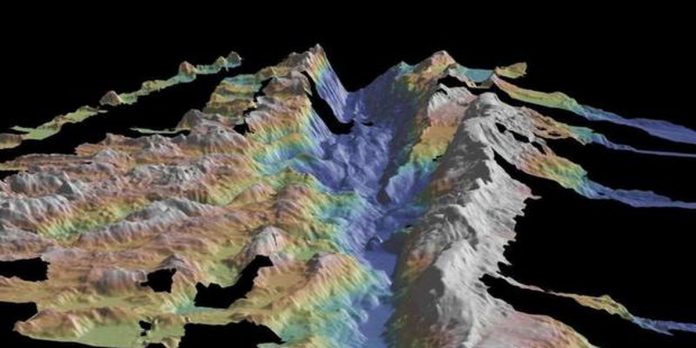For years, scientists have been attempting to track an extremely rare “boomerang” earthquake. Now, they’ve recorded one in the ocean for the first time – and it’s even more bizarre than they expected.
Earthquakes are the result of rocks breaking on a fault, which is a boundary between two plates. A “boomerang” earthquake, also known as a “back-propagating supershear rupture,” means the fracture travels away from the initial crack before returning to it at even faster speeds, scientists said.
Large earthquakes are capable of destroying buildings and triggering tsunamis, so understanding how they work is imperative to assessing potential hazards and implementing warning systems for future quakes.
According to a new study in the journal Nature Geoscience, a team, led by scientists from the University of Southampton and Imperial College London, successfully recorded a magnitude 7.1 earthquake on August 29, 2016. It ran along the Romanche fracture zone, a 560-mile-long fault line under the Atlantic Ocean near the equator, between Brazil and Africa.
Scientists say that large — meaning magnitude 7 or higher — quakes are difficult to study because they often set off a series of chain reactions along intricate networks of faults. Faults under the ocean have simple shapes, but they are located far away from seismometer networks on land, so an underwater network of seismometers is needed.
Researchers said the quake traveled in one direction between the South American and African tectonic plates, then boomeranged back to the start at ultra-fast speeds — breaking the “seismic sound barrier” — a sonic boom of sorts.
An analysis revealed the quake had two distinct phases. The rupture traveled upward and eastward first, before suddenly reversing and heading back west to the center of the fault at an accelerated speed of 3.7 miles per second.
Scientists aren’t exactly sure how this occurred, but they believe the first phase somehow triggered its more aggressive counterpart.
Only a handful of boomerang earthquakes have ever been recorded — the phenomenon has mostly been theoretical, until now.
“Whilst scientists have found that such a reversing rupture mechanism is possible from theoretical models, our new study provides some of the clearest evidence for this enigmatic mechanism occurring in a real fault,” lead author Dr. Stephen Hicks, from the Department of Earth Sciences and Engineering at Imperial College London, said in a press release.
“Even though the fault structure seems simple, the way the earthquake grew was not, and this was completely opposite to how we expected the earthquake to look before we started to analyze the data.”
Scientists said that if a similar type of quake occurred on land, it would drastically affect the amount of ground shaking — and possibly widen the affected area. Successfully tracking more boomerang quakes would allow researchers to better predict and assess the hazards from such events, improving impact forecasts.





























